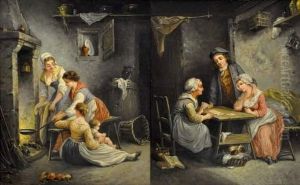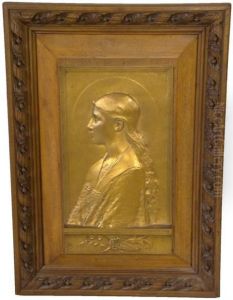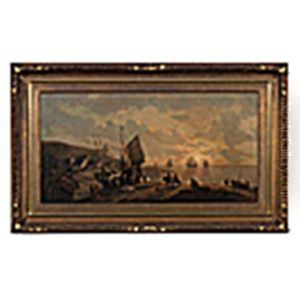Agathon Leonard Paintings
Agathon Léonard, whose birth name was actually Léonard Agathon Van Weydevelt, was a Belgian sculptor known for his Art Nouveau style and primarily recognized for his graceful figures of dancers. Born on April 24, 1841, in Lille, France to Belgian parents, Léonard spent most of his career in France and became associated with the French art movement of the late 19th and early 20th centuries.
Léonard originally trained as an architect before turning his focus to sculpture. His works often depicted elegant women and were characterized by their fluidity and movement, reflecting the dynamic changes in art and society during the Belle Époque, a period of Western European history that is conventionally dated from the end of the Franco-Prussian War in 1871 to the outbreak of World War I in 1914.
Perhaps his most famous work is the 'Danseuse' series, which was exhibited at the 1900 Paris Exposition Universelle. This series captured the spirit of the era's fascination with dance and performance, particularly the new and expressive styles that were emerging. These sculptures, which were initially produced in biscuit porcelain by the famous Sèvres porcelain factory, helped to cement his reputation as a sculptor of grace and beauty.
Despite his success, Agathon Léonard's work fell somewhat into obscurity after his death on October 27, 1923, in Paris, France. However, there has been a renewed interest in his work in recent decades, particularly among collectors of Art Nouveau and Belle Époque art. His sculptures, which once adorned the salons and homes of the fashionable elite, are now considered important artifacts of the period that encapsulate the essence of Art Nouveau aesthetics.


